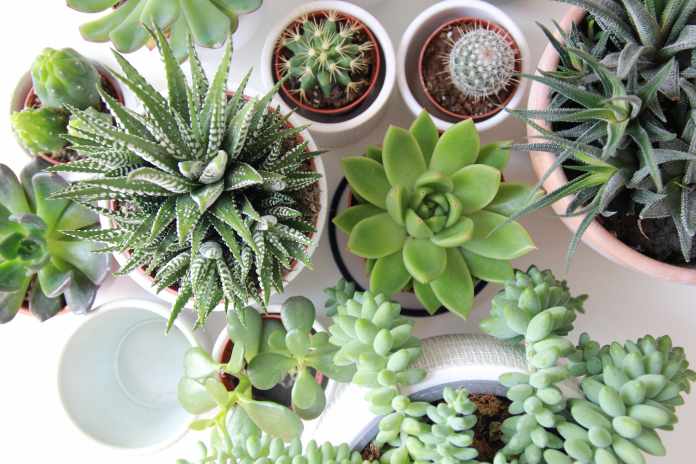Succulents are known for being hardy in nature and for flourishing in conditions that other plants would usually perish. Succulents are very easy to propagate, easy to grow and easy to care for – as they require little to no maintenance during their lifespan. With this in mind, how long should you expect a succulent to live in the U.K?
Table of Contents
What are succulents?
Succulents are a type of plant that has evolved to live in extremely dry climates and can store water for long periods of time to help them survive where there is very little rainfall.
There are a huge selection of succulents available, ranging from string of pearls to Agave americana. Succulent to live are becoming increasingly popular – with more species being introduced each season.
What is a succulent’s lifespan?
Because of the different varieties available, it can be difficult for gardeners to provide a precise average lifespan for this type of plant.
The lifespan depends on two things:
- Its species
- How well it’s cared for
Smaller, more popular species such as aloe vera and string of pearls have different lifespans. For example, Aloe Vera plants can live between 5-25 years, depending on the conditions and how well it is cared for. For a string of pearls however, their lifespan is only 5 years.
The reality is that succulents can live forever. While the original plant will perish, they often propagate themselves, causing new roots and plants to grow in its place.
How to care for succulents
As we’ve already mentioned, the lifespan of a succulent varies between species. Although succulents require little attention, they still need a certain level of care if you want them to reach their maximum lifespan.
Therefore, it’s important to know how to care for succulents if you want them to have a long life.
There are for points you should always consider when caring for these plants:
- Where will your succulents be kept? Inside or outside?
- What compost do you need?
- How much sunlight will it need?
- How much water will it require?
Making sure that you are mindful of these factors will undeniably prolong your plants lifespan.
Where should succulents be kept?
Succulents are best kept in plant pots with drainage holes in the bottom to allow excess moisture and water to escape. Succulents can be grown both indoors and outdoors and can also be grown in greenhouse environments, although this isn’t wholly necessary for all succulent species.
What compost do succulents need?
One of the most important factors when caring for a succulent is the compost that you will be growing it in. Succulents need the right nutrients to thrive. Every plant however has their own requirements, so be sure to do your research or speak to your local garden centre if you’re unsure.
How much water do succulents need?
Due to their hardy nature, Succulents can survive on very little water throughout the year.
If you’re growing it in a back garden in the UK, they’ll need almost no watering if they are placed in an area where it was absorb falling rainwater.
If it gets really hot during the Summer, you might find yourself needing to water them occasionally – especially if you’ve noticed there’s been no rainfall in recent weeks. Give them a thorough watering to ensure that the plant isn’t dehydrated.
If they are kept indoors, you will need to remember to regularly water your succulents as they will have no other means of absorbing moisture. Be sure to set yourself a reminder so you don’t forget!
How much sunlight does a succulent need?
The amount of sunlight that a succulent needs can vary dramatically from species to species.
If you leave a succulent in a very sunny position, they will generally thrive. If kept indoors, you will need to make sure that it gets enough sunlight throughout the day as you may notice it begin to wilt or even perish.
How to propagate a succulent
Propagating a succulent is a great way of extending the life of your succulent, by turning the cuttings from one plant into several other plants if correctly planted and cared for.
The propagating process:
- Remove some leaves/cuttings from your succulent plant. Twist the leaves carefully to avoid tearing. If it’s a taller plant, remove leaves from the bottom of the stem – which you will then discard. If ‘beheading’ – use scissors or clippers to clearly cut the stem about an inch below the lower leaves of the plant head.
- Set the cuttings to one side in a container or tray. After a few days, you will see that a callus will have formed on the cut end of the trimmings.
- Watch for the growth of roots over the next few weeks. Leaf cuttings will begin to wither as they become food for new, emerging plants.
- When you can see that roots have formed, plant the succulent to live cuttings into a well-draining container. Or select a garden location suitable for planting if planting outside.
- Plant in a sunny spot, either in early morning or late afternoon, when the sun is less intense.
- Mound the soil up to raise the cuttings above the edge of your chosen container or garden surface.
- Gently pack the soil down to secure the roots, and do not water.
- Once planted, water sparingly and gently pack the soil down. As your new plant starts to get used to its new environment, you will start to see some growth.
Be sure to set aside time over a couple of weeks to work on the propagation process. If propagating a range of different succulent to live, try different methods and monitor the results to see which works best for each plant.
It’s important to propagate and care for your succulents, in order for them to live a long and health life both indoors and outdoors. If you are still unsure of whether what you’re doing is right, contact your local nursery or garden centre and speak to an expert who will be able to assist you.



















